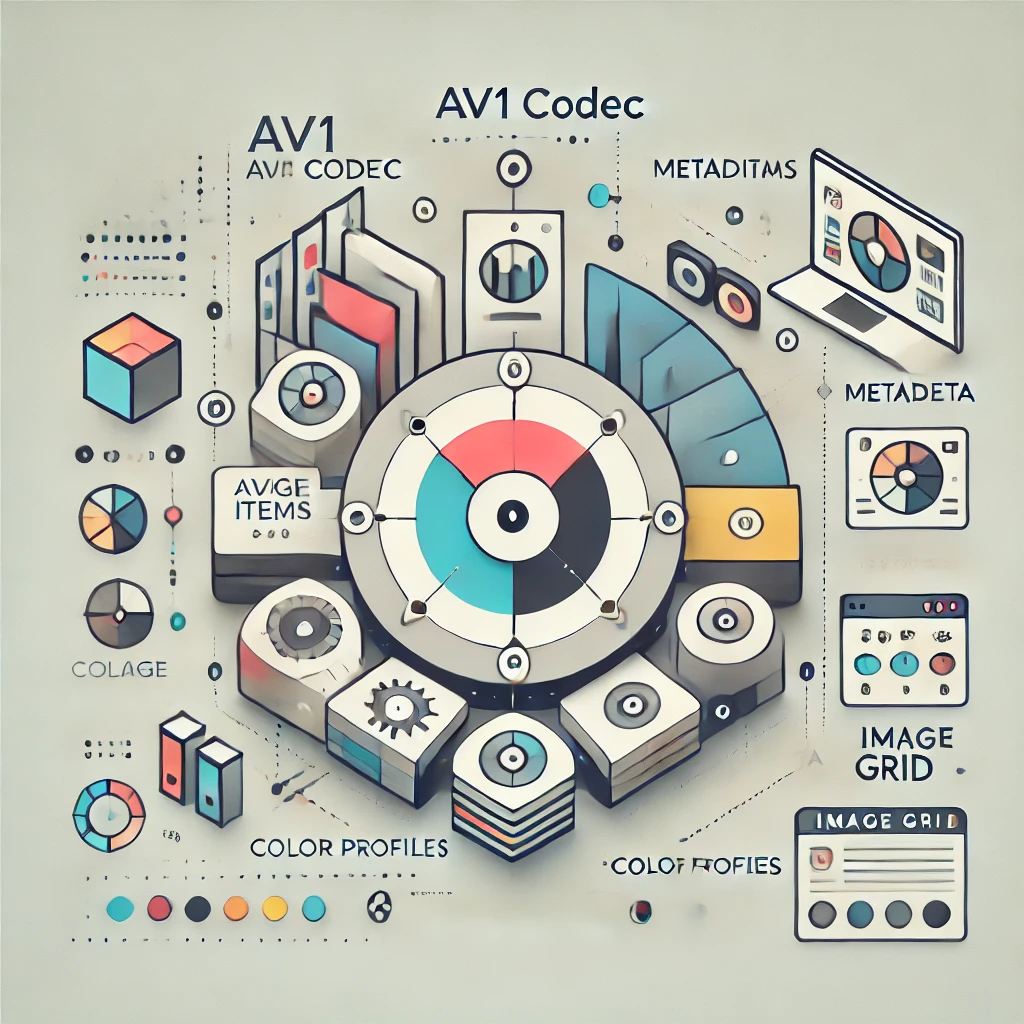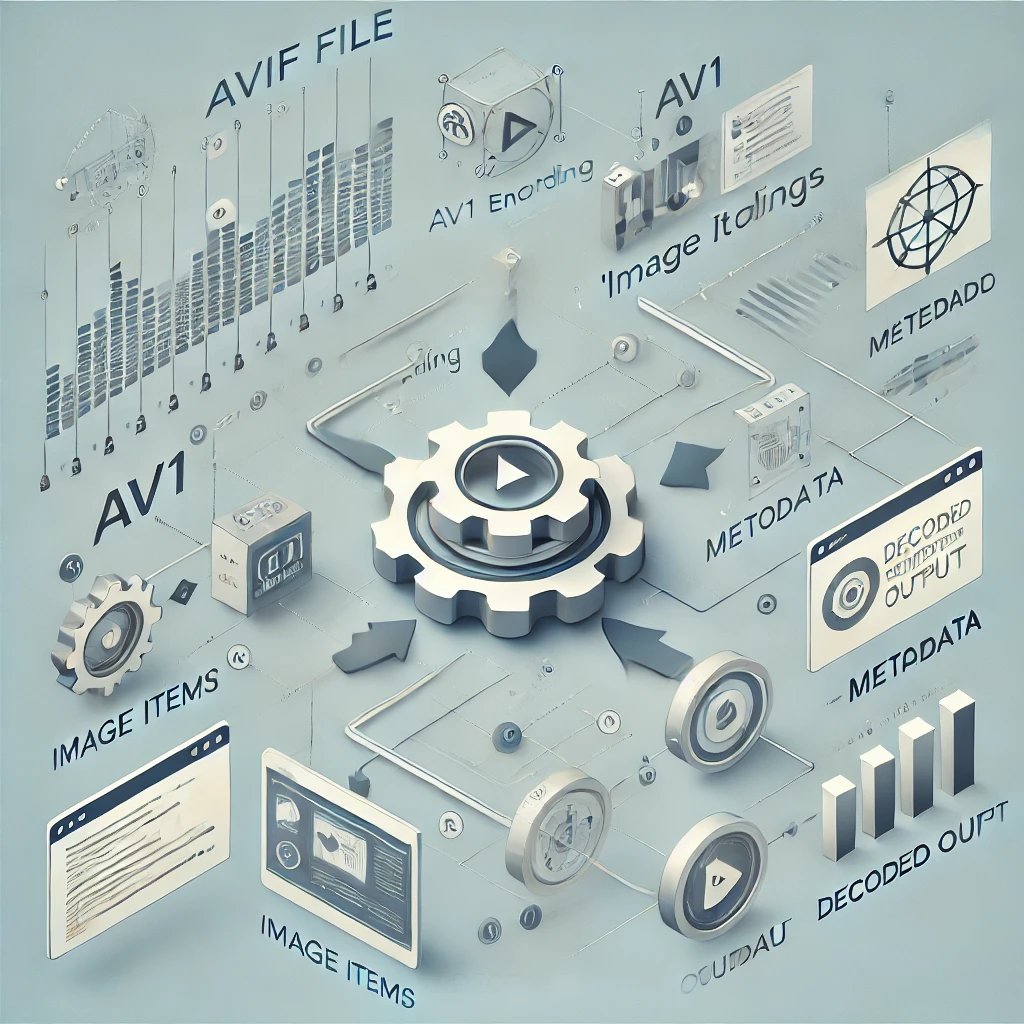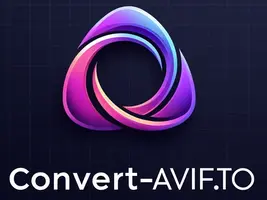In the world of digital imaging, understanding the underlying structure of file formats can provide valuable insights for developers, content creators, and anyone working with images. AVIF (AV1 Image File Format) represents a significant advancement in image compression technology, and its sophisticated structure is key to its impressive capabilities. This deep dive explores the technical architecture of AVIF files, revealing how their components work together to deliver superior compression and visual quality.
AVIF’s Container Architecture
AVIF uses the High Efficiency Image File Format (HEIF) as its container structure at its foundation. This modern container format provides AVIF with a flexible, extensible framework that supports its advanced features.

The HEIF Foundation
HEIF serves as the structural backbone for AVIF, providing a sophisticated container architecture that extends well beyond the capabilities of traditional image format containers. Developed by the Moving Picture Experts Group (MPEG), HEIF is based on the ISO Base Media File Format (ISOBMFF), which also forms the foundation for formats like MP4.
This heritage gives AVIF several structural advantages:
-
A standardized, well-tested container format
-
Support for storing multiple related images in a single file
-
Flexible metadata capabilities
-
Efficient organization of different data types
-
Future-proof extensibility
Unlike older formats like JPEG, which use relatively simple container structures, HEIF provides AVIF with a modern, sophisticated framework designed for contemporary imaging needs.
Box-Based Structure
AVIF files are organized into a hierarchical structure of “boxes” (also called atoms in some contexts). Each box serves a specific purpose and contains either data or other boxes, creating a nested structure that efficiently organizes the file’s contents.
This box-based approach offers several benefits:
-
Modular organization that separates different types of data
-
Easy extensibility for adding new features
-
Efficient parsing and access to specific components
-
Clear separation of metadata from image data
The box structure makes AVIF files more complex than traditional formats like JPEG, but this complexity enables the format’s advanced capabilities and performance.

Essential AVIF Boxes and Components
An AVIF file contains several critical boxes that define its structure and functionality.
File Type Box (ftyp)
The File Type Box appears at the beginning of an AVIF file and serves as its signature, identifying it as an AVIF image. This box contains:
-
The major brand (‘avif’)
-
Minor version
-
Compatible brands list (may include ‘mif1’, ‘miaf’, ‘MA1A’, or ‘MA1B’)
This identification mechanism allows software to quickly determine if a file is an AVIF image and what capabilities it supports, without having to parse the entire file.
Meta Box (meta)
The Meta Box contains metadata about the image and serves as a container for several necessary child boxes:
-
Handler Reference Box (hdlr): Identifies the content as an image
-
Item Information Box (iinf): Lists the items in the file
-
Primary Item Box (pitm): Identifies the primary image
-
Item Properties Box (iprp): Defines properties of the items
This structured approach to metadata organization makes AVIF particularly flexible for storing different types of information alongside the image data.
Media Data Box (mdat)
The Media Data Box contains the actual compressed image data. In AVIF, this is where the AV1-encoded image is stored. The mdat box may contain:
-
Compressed image data for the primary image
-
Additional photos (if the file contains multiple images)
-
Alpha channel data (if the image has transparency)
The content of the mdat box is encoded using the AV1 video codec, which has been adapted for still image use. This is where AVIF’s impressive compression efficiency comes from.

Item Location Box (iloc)
The Item Location Box specifies where each item (image or metadata) is located within the file. It essentially serves as a map, allowing software to quickly find and access specific components without parsing the entire file. This structure facilitates efficient random access to file components, which is particularly useful for large or complex AVIF files.
Item Properties Box (iprp)
The Item Properties Box defines the properties of items within the file. For images, these properties include:
-
Pixel dimensions (width and height)
-
Color profile information
-
Rotation and transformation data
-
Pixel format specifications
These properties tell software how to correctly interpret and display the image data stored in the file.
Image Data Encoding
At the heart of AVIF’s performance is its use of AV1 video compression technology for still images.
AV1 Compression Fundamentals
AVIF leverages the AV1 video codec, developed by the Alliance for Open Media, for its core compression. This advanced codec employs several sophisticated techniques:
-
Block-based prediction using both intra-frame (spatial) and inter-frame (temporal) methods
-
Transform coding using integer transforms similar to DCT
-
Entropy coding with context-adaptive binary arithmetic coding
-
Loop filtering to reduce blocking artifacts
-
Global and local motion compensation
While designed for video, these techniques work remarkably well for still images, allowing AVIF to achieve superior compression compared to older formats like JPEG.
Color Encoding
AVIF supports flexible color encoding options:
-
YCbCr color representation (similar to JPEG) with various chroma subsampling options (4:4:4, 4:2:2, 4:2:0)
-
RGB color space for applications requiring direct RGB data
-
Monochrome for grayscale images
-
Multiple bit depths: 8-bit, 10-bit, and 12-bit per channel
This flexibility allows AVIF to efficiently encode various types of images while supporting advanced color capabilities like HDR.
Alpha Channel Implementation
Unlike JPEG, AVIF natively supports alpha channel transparency. Depending on the encoder settings, the alpha channel is stored as a separate image plane and can be compressed either losslessly or with lossy compression.
This approach allows for efficient encoding of transparency while maintaining high quality where needed. The alpha channel can be accessed independently of the color data, enabling efficient processing of transparent images.
Advanced Features in AVIF Structure
AVIF’s sophisticated structure enables several advanced features that are not available in older formats.
HDR and Wide Color Gamut Support
AVIF supports High Dynamic Range (HDR) imaging through several structural components:
-
ICC profile support for color management
-
Transfer characteristic signaling for various HDR formats (PQ, HLG)
-
Metadata for mastering display information
-
Support for wide color gamuts like Rec. 2020
These capabilities make AVIF particularly well-suited for modern displays and professional imaging workflows where color accuracy and dynamic range are critical.
Multi-Image and Animation Support
The HEIF container allows AVIF to store multiple related images in a single file, enabling:
-
Image sequences for animation
-
Derived images (like thumbnails or cropped versions)
-
Alternative representations of the duplicate content
For animations, AVIF stores timing information and frame relationships, similar to video formats. This approach is more efficient than animated GIFs or even animated WebP in many cases, as it can leverage inter-frame compression techniques from AV1.
Progressive Decoding Capabilities
AVIF supports progressive decoding, allowing images to be displayed at lower quality while still loading. This can be implemented in two ways:
-
Spatial progression: Showing the image at lower resolution first
-
Quality progression: Showing the whole image with increasing quality
This capability is particularly valuable for web delivery, where perceived performance can be improved by showing users a lower-quality version of an image while the full-quality version loads.
Technical Specifications and Constraints
Understanding AVIF’s technical limits is essential for effective implementation.
Size and Complexity Limitations
AVIF has some practical limitations to consider:
-
Maximum dimensions are theoretically huge (up to 65,535 × 65,535 pixels)
-
Computational requirements for encoding are higher than for older formats like JPEG
-
Decoding complexity can affect performance on lower-powered devices
-
Memory usage during encoding and decoding can be substantial for large images
These factors need to be considered when implementing AVIF, particularly for applications targeting a wide range of devices.
Profile and Level Definitions
AVIF defines profiles and levels that specify constraints and capabilities:
-
Baseline Profile: Basic functionality suitable for most applications
-
Advanced Profile: Includes additional features like HDR
-
Levels: Define constraints on dimensions, bit depth, and other parameters
Understanding these profiles helps developers choose appropriate encoding settings for different use cases and ensure implementation compatibility.
Practical Implications of AVIF Structure
AVIF’s structure has several practical implications for developers and content creators.
Optimization Opportunities
Understanding AVIF’s structure enables more effective optimization:
-
Content-aware encoding settings can be applied based on image type
-
Metadata can be optimized to reduce file size
-
Progressive encoding can be tuned for specific delivery scenarios
-
Alpha channel compression can be adjusted based on content needs
These optimizations can significantly impact both file size and visual quality, making knowledge of AVIF structure valuable for anyone working with the format.
Conversion Considerations
When converting to or from AVIF, several structural factors come into play:
-
Feature support differences between formats (transparency, HDR, etc.)
-
Metadata preservation or loss during conversion
-
Color space transformations
-
Quality trade-offs based on compression differences
Tools like those offered at convert-avif can handle these considerations automatically, but understanding the underlying structural changes can help users make informed decisions about conversion settings.
Conclusion
AVIF’s sophisticated structure, built on the HEIF container and AV1 compression technology, enables its impressive combination of small file sizes and high image quality. This architecture supports advanced features like HDR, transparency, and animation while maintaining excellent compression efficiency.
For developers and content creators, understanding AVIF’s structure provides valuable insights that can help optimize images for different use cases. While the format’s complexity exceeds that of older formats like JPEG, this complexity enables the advanced capabilities that make AVIF an excellent choice for modern web and application development.
As AVIF adoption continues to grow, familiarity with its structure will become increasingly valuable for anyone working with digital images. Whether you’re developing imaging applications, optimizing web content, or simply converting images for various purposes, a deeper understanding of AVIF’s components and architecture can help you make the most of this powerful format.
Ready to convert your images to or from AVIF? Visit convert-avif.to for fast, free, and high-quality conversions that leverage the full potential of this next-generation image format.
